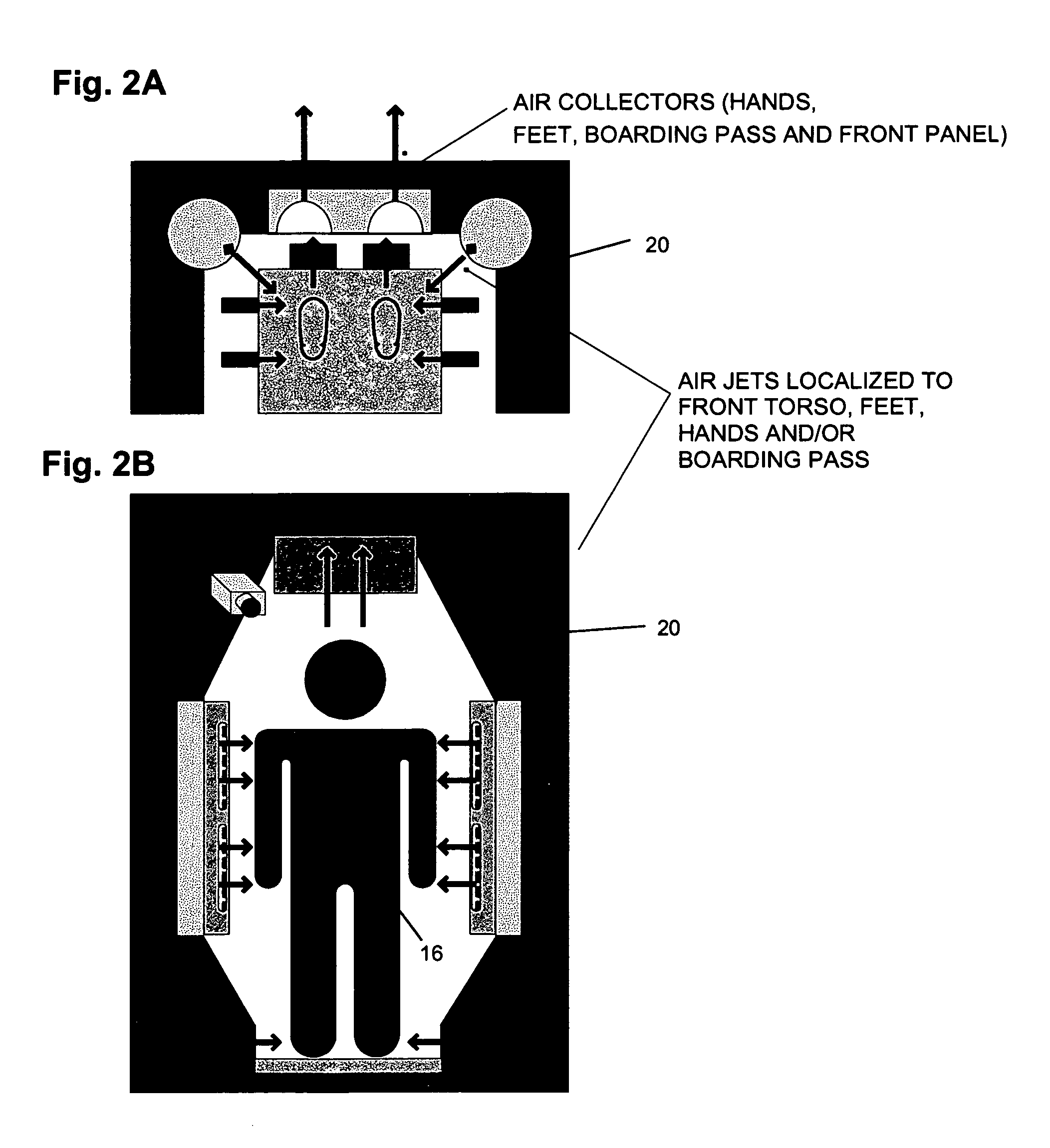Multi-zonal detection of explosives, narcotics, and other chemical substances
a multi-zonal, explosive and other technology, applied in the field of scanning apparatus and methods, can solve the problems of slow, cumbersome, laborious, etc., and achieve the effects of improving detection efficacy, reducing labor intensity, and reducing labor intensity
- Summary
- Abstract
- Description
- Claims
- Application Information
AI Technical Summary
Benefits of technology
Problems solved by technology
Method used
Image
Examples
Embodiment Construction
[0036] Preferred embodiments of the present invention will be explained in greater detail hereinafter, with reference to the accompanying drawings.
[0037] Referring to FIG. 1, there is shown one implementation of a multi-zonal system 1 for detecting small quantities of explosives and / or other contraband substances present on the skin or clothing of a human subject, or otherwise closely associated with the subject. System 1 is preferably configured to be deployed in an airport or similar public facility at which screening for contraband is a pressing societal need. System 1 comprises a tunnel-like portal open at opposite ends connected by passageway 12, which is further defined by flanking passageway side walls 2. Subjects walk through the passageway 12 in the direction generally indicated by arrow 14. The portal is dimensioned to accommodate persons of various sizes. For example, the vertical height may be about seven feet and the width transverse to the passage direction may be abo...
PUM
 Login to View More
Login to View More Abstract
Description
Claims
Application Information
 Login to View More
Login to View More - R&D
- Intellectual Property
- Life Sciences
- Materials
- Tech Scout
- Unparalleled Data Quality
- Higher Quality Content
- 60% Fewer Hallucinations
Browse by: Latest US Patents, China's latest patents, Technical Efficacy Thesaurus, Application Domain, Technology Topic, Popular Technical Reports.
© 2025 PatSnap. All rights reserved.Legal|Privacy policy|Modern Slavery Act Transparency Statement|Sitemap|About US| Contact US: help@patsnap.com



